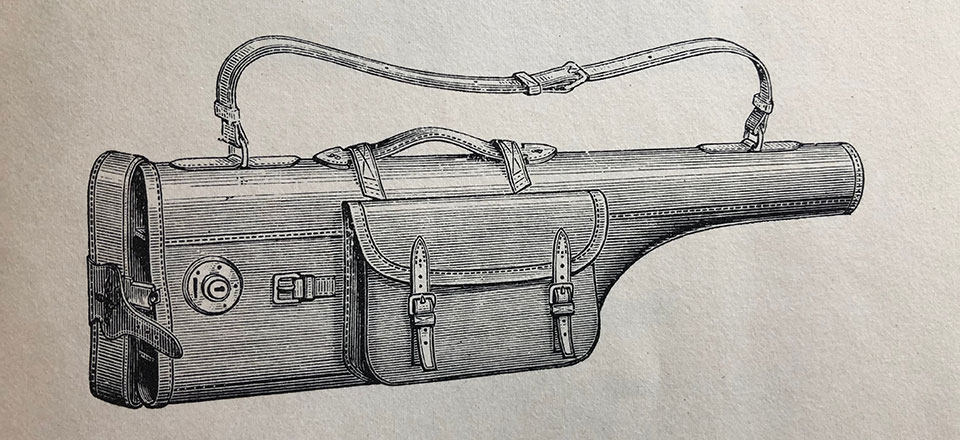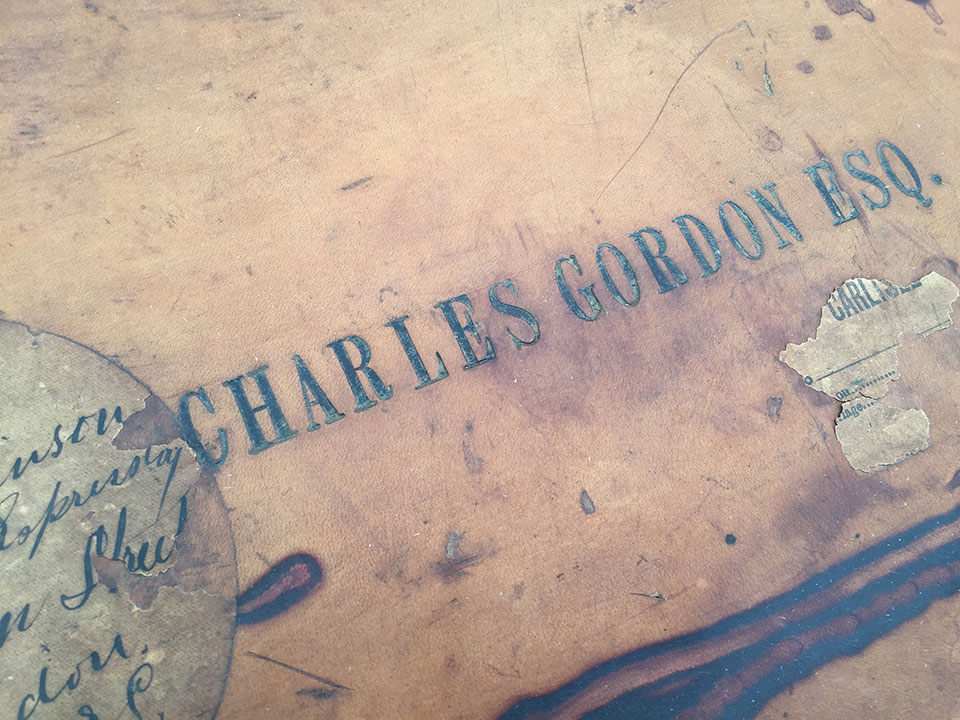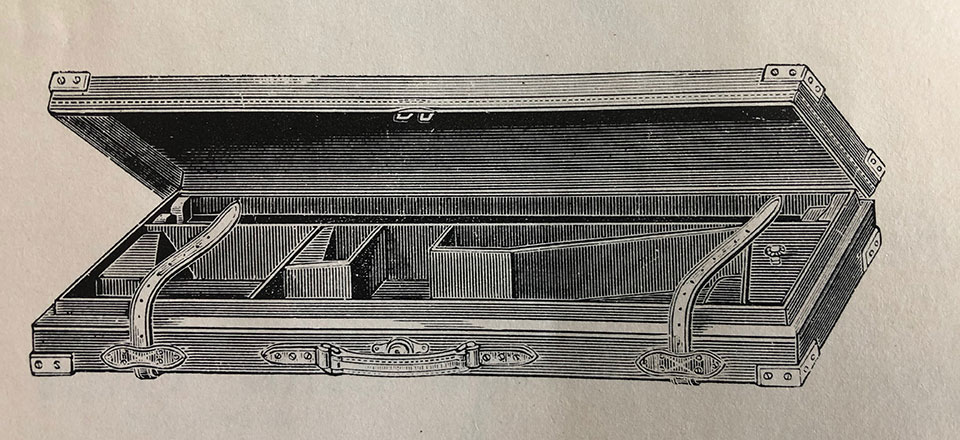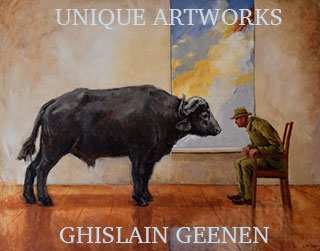Gun cases are interesting relics of a bygone era. They often contain fascinating historical data and reminders of a gun’s life and adventures.
A chap walked into my office a year or two ago and offered me a fairly ordinary boxlock ejector. He told me it once belonged to Richard Meinertzhagen. Col. Meinertzhagen was colourful and controversial figure in early twentieth century history. He rubbed shoulders with some of the Empire’s most interesting figures, such as T.E. Lawrence and Winston Churchill. He probably murdered a troublesome African chief with whom he was supposed to be negotiating and may well have shot his second wife.
A gun belonging to a character like Meinertzhagen would garner some collector interest. It was, therefore disappointing to hear that the owner had removed the colonel’s name from the gun case, as he ‘felt funny carrying a case with someone else’s name on it’. By doing so he removed what evidence of ownership existed and any provenance and the value it may have had attached to it.
Today, simply the right name on a gun case can create a great deal of interest. Holt’s recently took in a nice case by Dickson. On it was a name that meant nothing to the vendor: Charles Gordon. Gordon, however, to a gun collector, is a name that will be of great interest as his odd life and sad demise is nicely chronicled by Donald Dallas in his book ‘Magnificent Madness’. Gordon’s guns were, invariably, beautifully cased and presented.
I once handled a cartridge magazine with a label on it from the Hindenburg. It now resides in the collection of a friend. The Hindenburg was a German airship, which burst into flames while docking in the USA, in May 1937. It was delivered in March 1936 and only flew 63 times. That label is indeed a rarity and adds to the fun of ownership, as does the White Star Line label on a Purdey case in my gun room at the moment. Fortunately, the White Star ship of choice was not the Titanic, or it would be at the bottom of the Atlantic.
The outsides of gun cases tell some of the stories but the insides are often extremely helpful. Hand-written notes that are stuck into the lid often denote the exact recipe for loading a numbered gun or rifle. If the gun and case are together, so much the better.
I have a Purdey shotgun here which belonged to a family member and dates to 1867. The gun was one of a pair and was, like many, decanted into an earlier, single case at some point in its life, probably for ease of carriage or if the pair were spilt between brothers etc. The case is from an earlier Purdey muzzle loader but hand-written notes on the label (by one of my long dead ancestors) record the serial number of the trans-located gun and the charges of powder and shot which best suit it.
The cost of gun cases historically has varied. Charles Gordon bought a Purdey in 1899 for £73.00 and had it lavishly cased for an additional cost of £14.00. W.J Jeffery advertised cases 'best quality oak & leather' for £3.8s.0d, in 1912. A 'good wood & leather case' was £2 2s. 6d and a 'cheap quality, wood body, leather covered case ... suitable for guns costing up to £15.00' was £1. 10s. 0d.
A canvas case from Jeffery cost 18 shillings and sixpence. Leg-of-mutton cases were an alernative, used for ease of carriage on foot and they cost £2.14.0d. for bet quality leather versions and 18 shillings for a soft leather, 'Hurlingham' pattern case.
In 1924, Charles Lancaster sold best quality oak & leather cases for £9.00, a second quality version was £7.00 and a canvas case was £3 10s 6d. Solid leather cases were, by then, a popular, lighter alternative to a full-sized oak and leather case. These 'solid leather' cases were £6. 12s 6d in best quality and £5.15s 0d in second quality. Leg-of-mutton cases were described as 'Hurlingham Bat Cases' and tehy cost £6.00 in best quality or £3 15s. 0d in second quality.
Today a best quality leather case will cost around £1,000 and a bespoke oak and leather case with a canvas outer and accessories could set you back well over £3,000. It is not uncommon to see best makers charging upwards of £6,000 for a best caee and full range of acceories when quoting for a new build.
Vintage gun cases are increasingly expensive to acquire. While it is possible to pick up a useable vintage example for £300, a good oak and leather case will cost over £500 and one with a prestigious maker’s label, good interior and compartments for tools could well nudge a thousand pounds at auction.
There is no doubt that a really good vintage gun case is the best setting for a quality gun. There is something pleasing about a beautiful gun, properly cased with accessories, all in tact. Collectors love them and will pay accordingly.
However, be careful with any project involving re-setting or re-lining old cases. To do a professional job requires a good deal of time and precision. There are people who specialise in this work but current prices start at around £500, so it s not an inexpensive venture. Like guns, cases cost the same to repair regardless of quality, so if you are going to bother, get the best case you can find to start with.
If it is leather, check to see that the condition of the leather is restorable. If it has dried out to the point that it is disintegrating, then no amount of Renapur will solve your problem. If however, it is dry but sound, the leather can be brought back remarkably well with that, or similar restorative balms and waxes.
One of the trickiest repairs is to strap work. Most cases have two straps which hold them shut in case the lock fails or is not engaged fully. These have to be put under stress when tightening and therefore fail first, as the leather gets dry with age. I keep old straps and buckles so that if I need new ones made we can re-use the old buckles. They look so much better than new brass.
Handles also often become detached, usually because the leather loop which holds them to the brass ‘D’ shaped carrier tears. Another issue is the old thread dries out and fails. Stitching through the wooden carcass is beyond the hobbyist. Brass plates can be used to rivet or screw the vulnerable area down and many cases have these from old repairs, or even as original strengthening features.
Case repair is something that should be within the skillset of most owners, if the task is taken on carefully and with attention to detail. Wood dividers, glues and fabrics can be found from specialist suppliers, like Peter Dyson, or even from craft shops. Renapur, Jo-Jo and similar leather balms are widely available – I buy mine from the scouse scallys at the Game Fair every year. 
A bench, basic workshop tools and a few clamps are all that you need to get started. The best way to get started is reverse engineering a good, but tired, case, remove carefully, clean and re-wrap in fabric each part before re-assembly. As you get a feel for the construction process, you will be able to take on more challenging tasks. It can be a rewarding task to undertake in the winter months, when the odd rainy afternoon offers nothing tempting outdoors.
Published by Vintage Guns Ltd on



